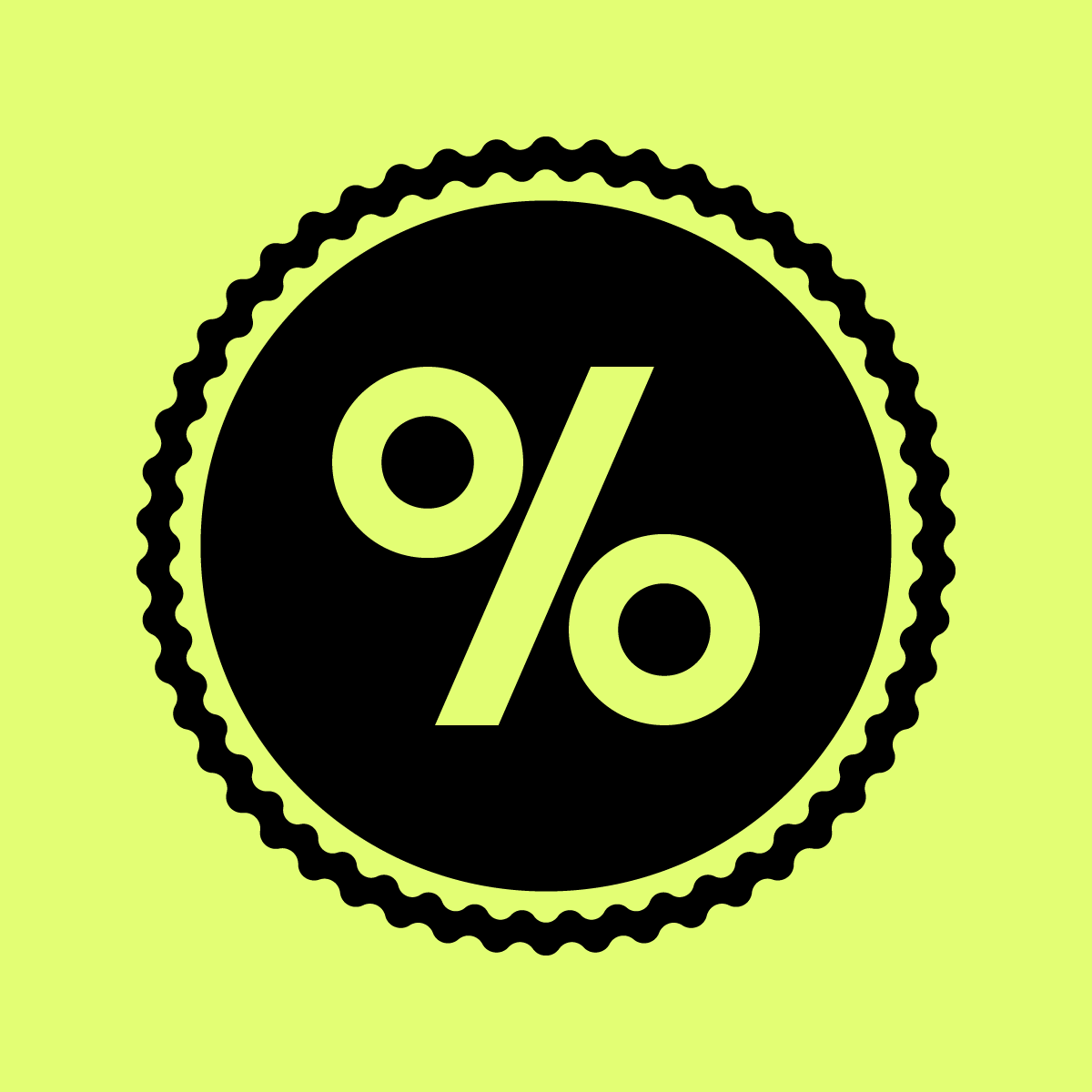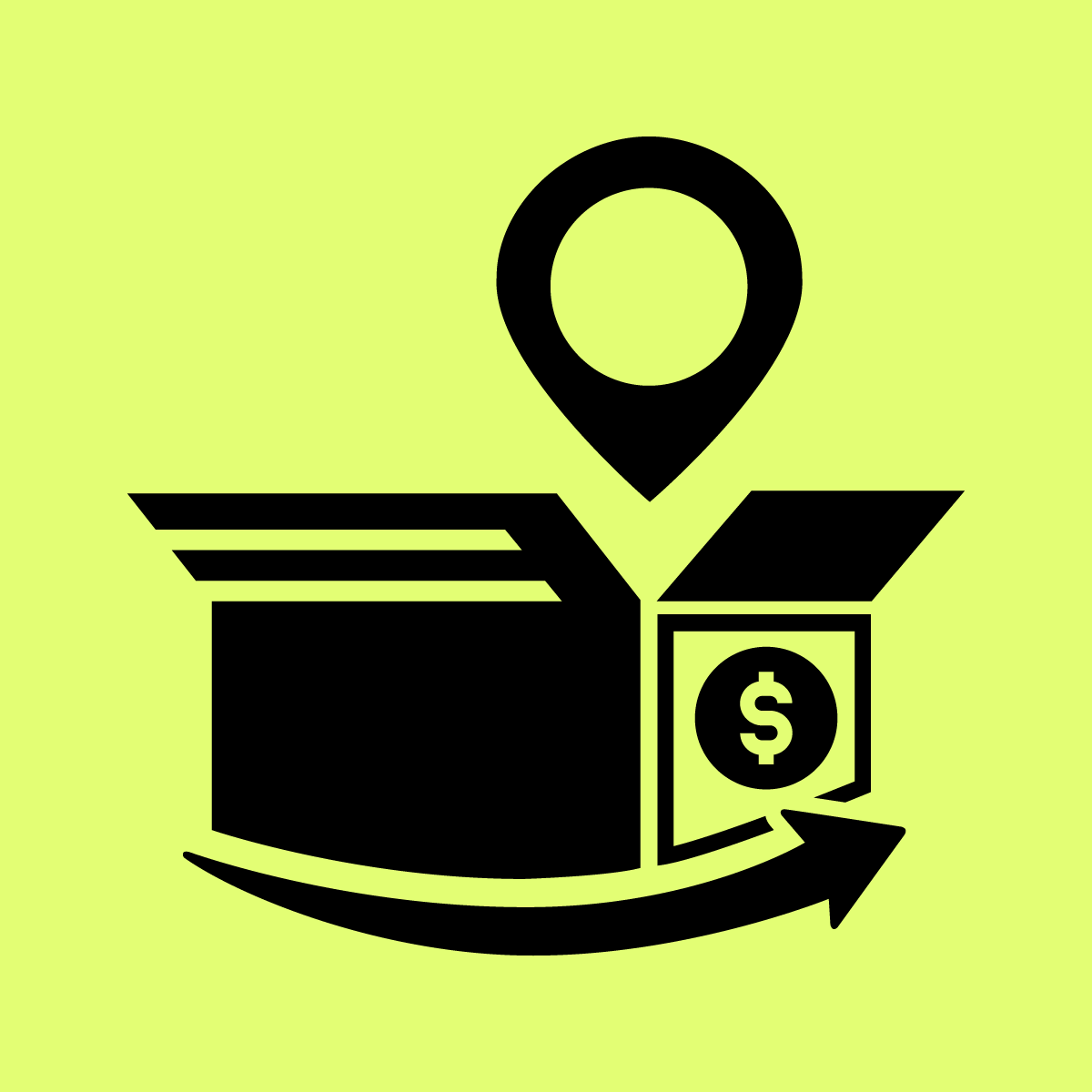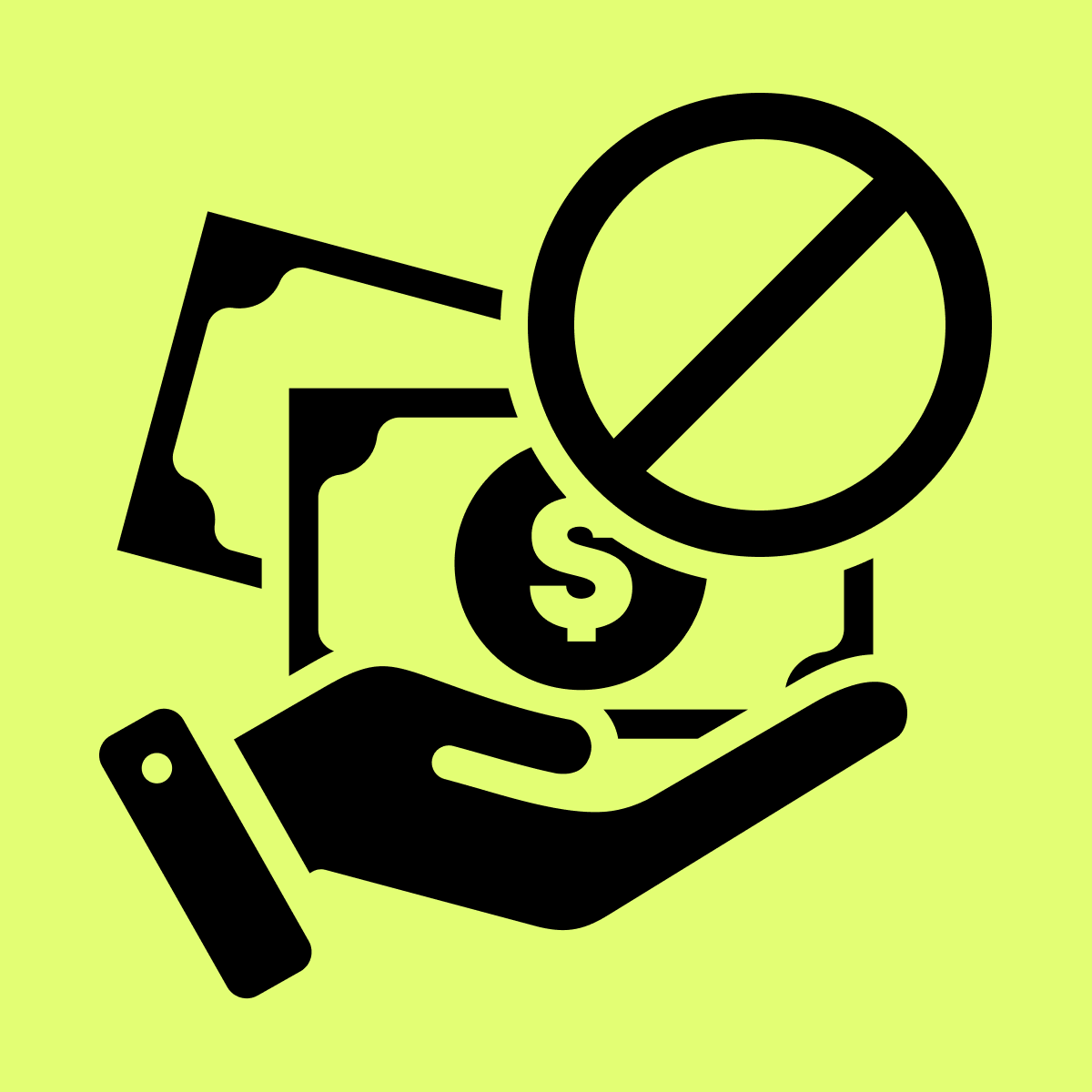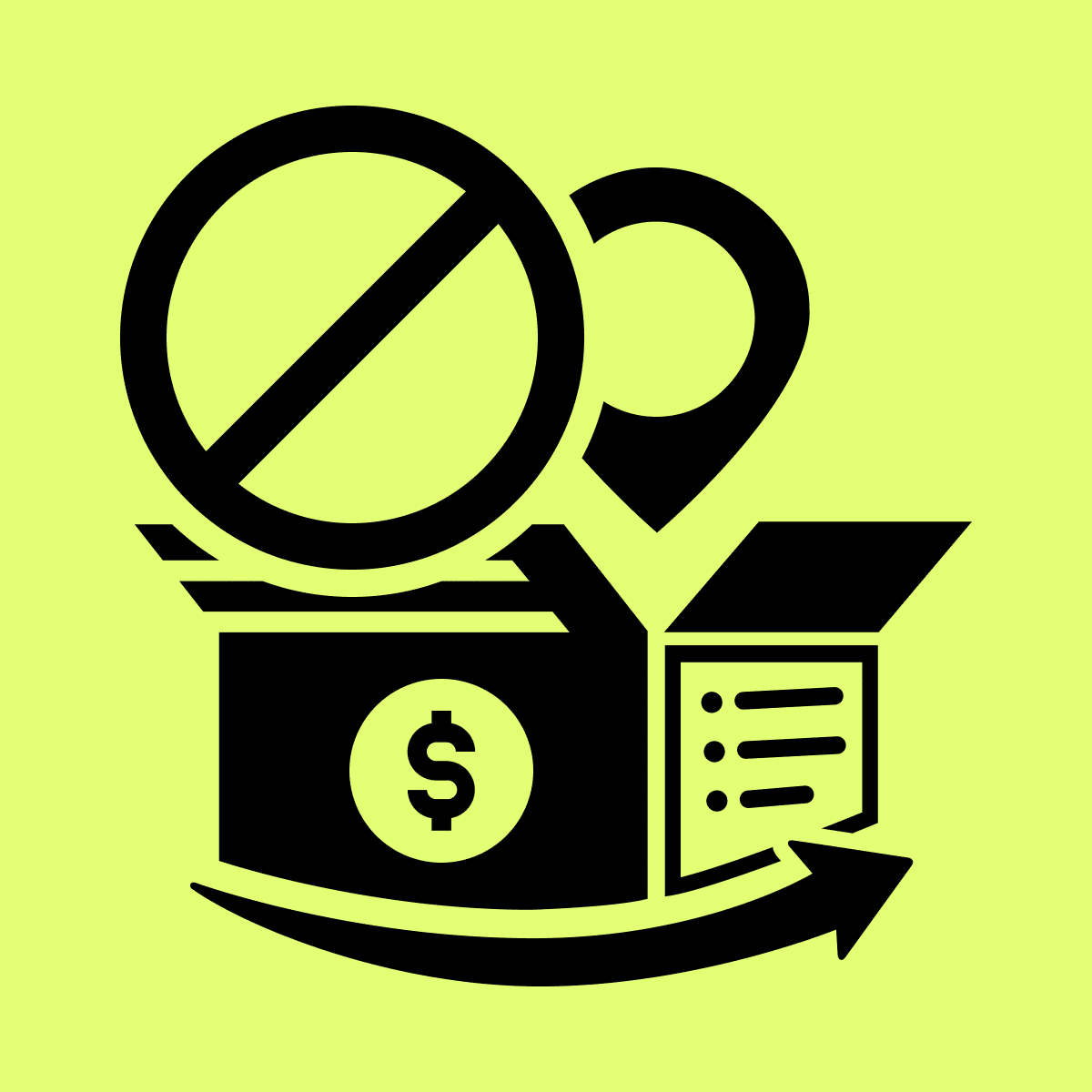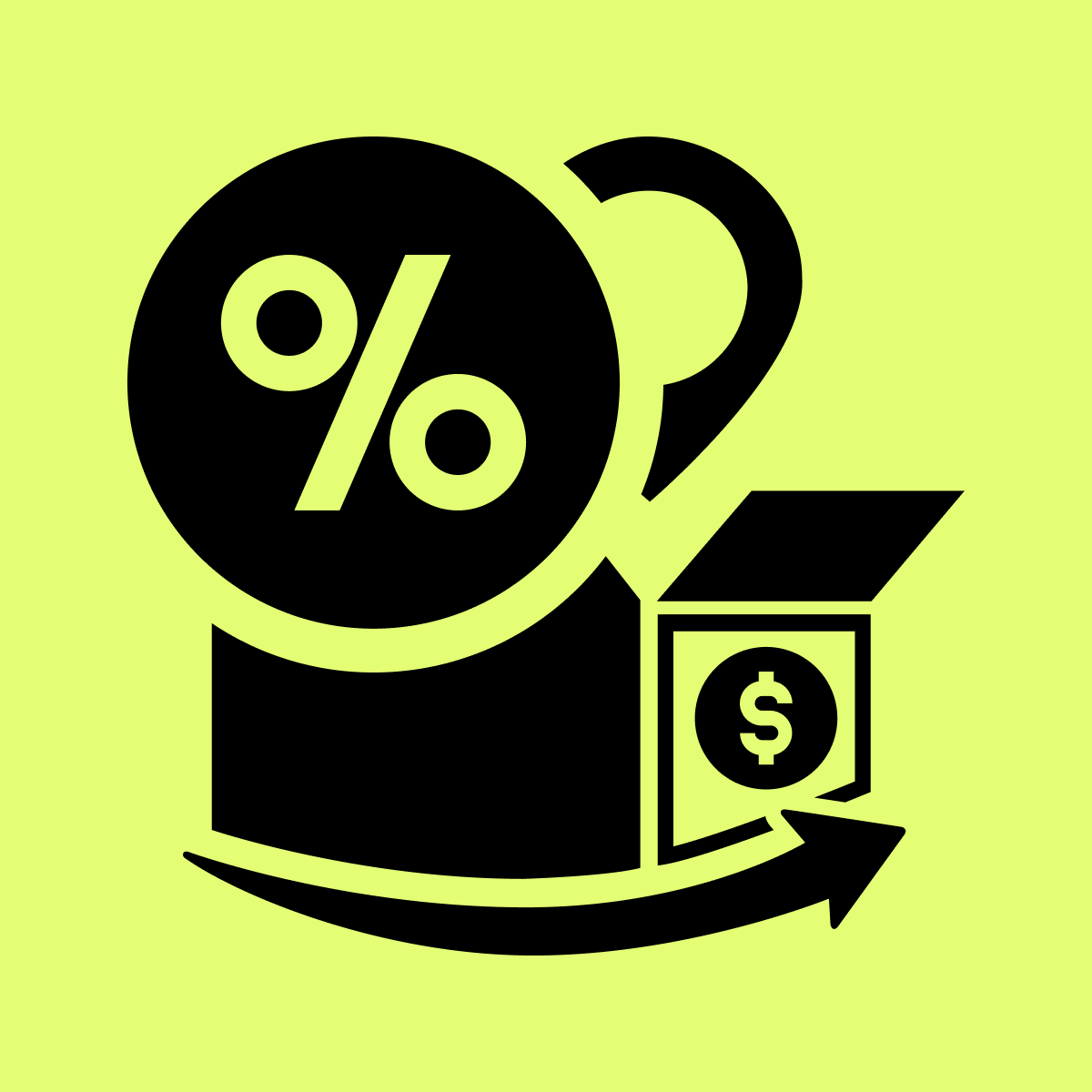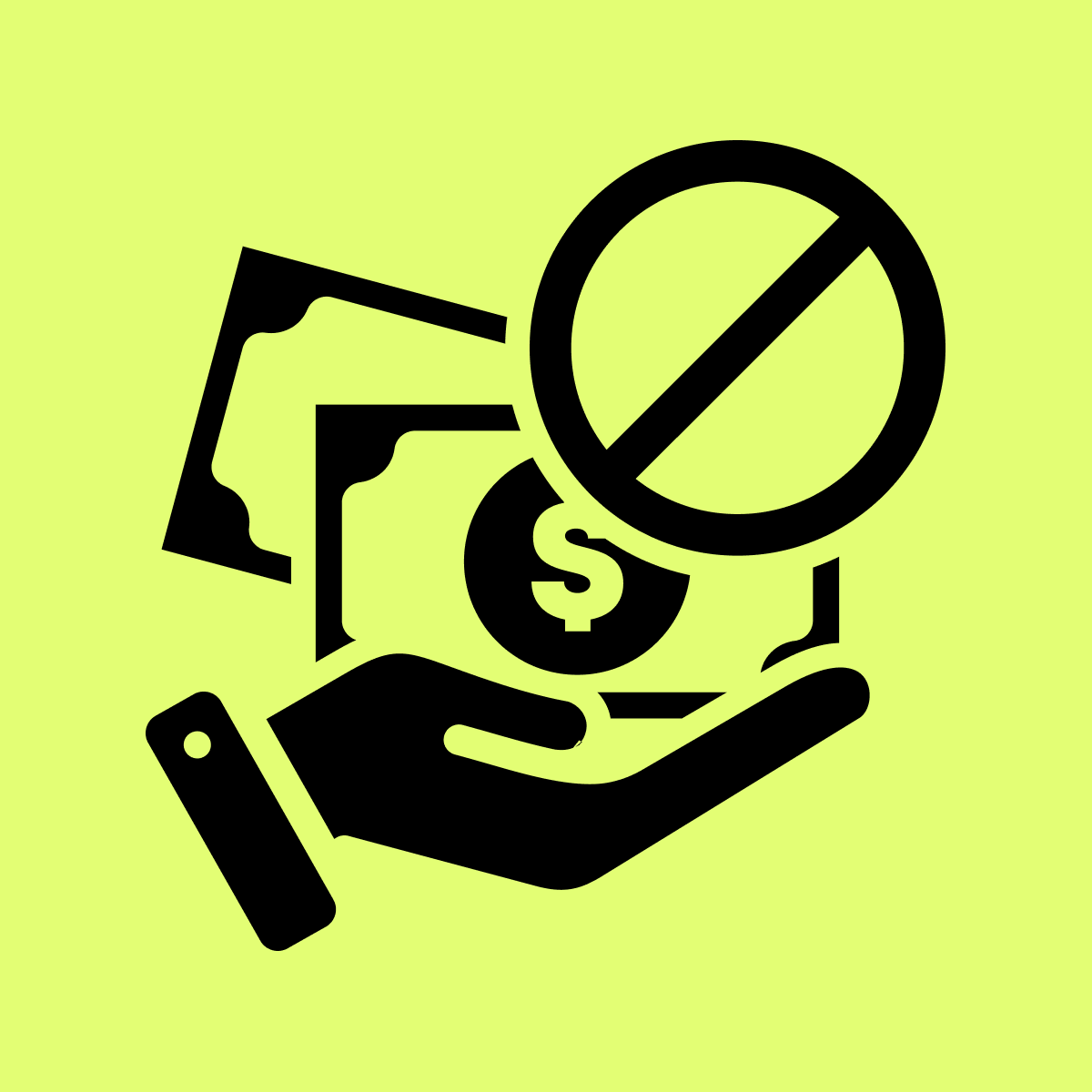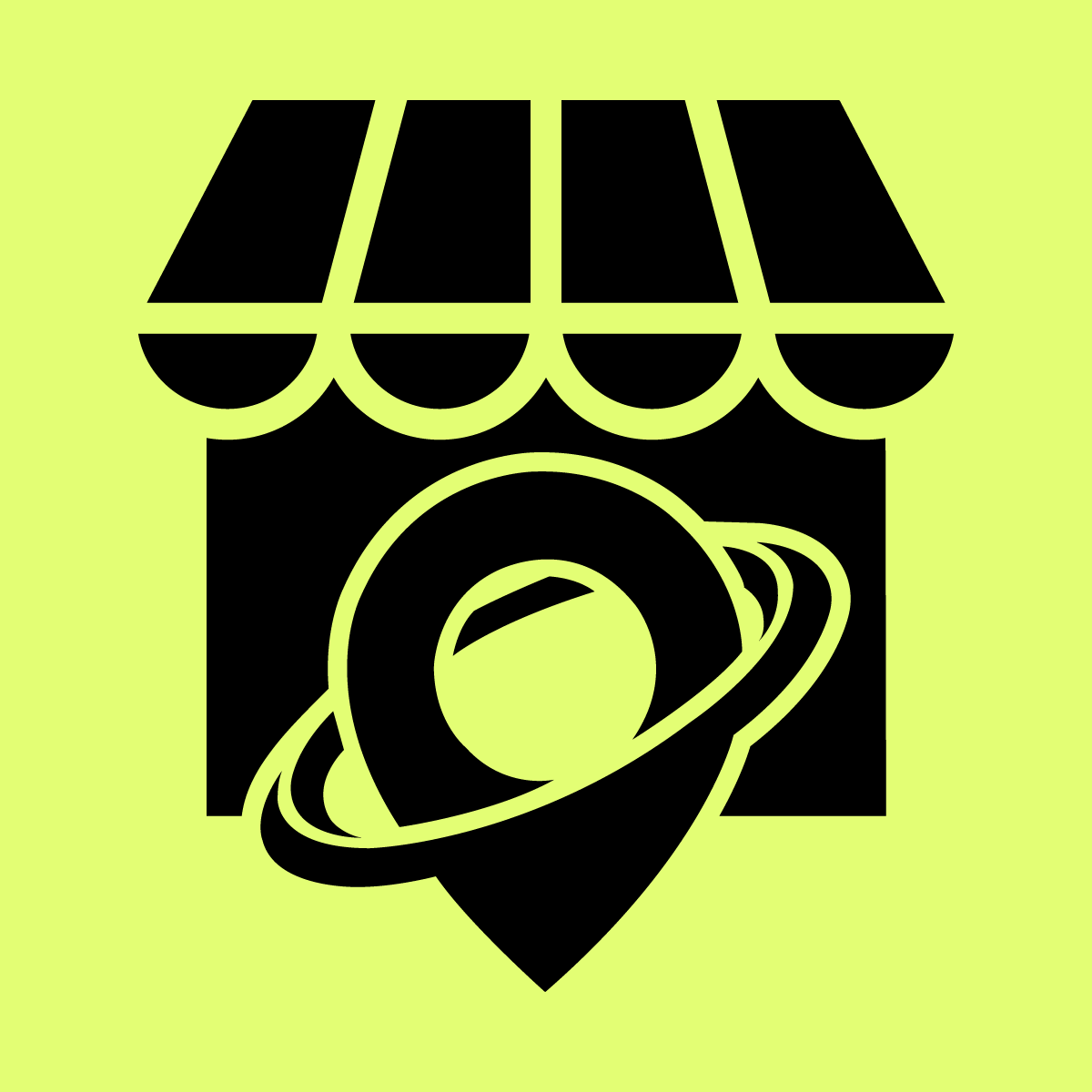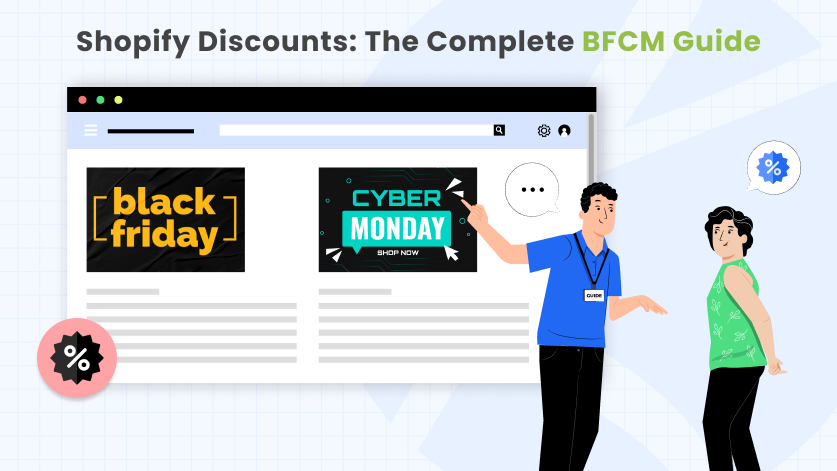Shopify discounts are a highly effective way to boost sales during Black Friday and Cyber Monday (BFCM), the biggest shopping days of the year.
These dates represent a shopping frenzy that sweeps across the globe, and it’s a time when consumers are looking for the best deals and discounts. For businesses, it’s a crucial period that can make or break their annual revenue targets.
During these days, shoppers expect to find good deals. They really like getting discounts, and when they see a good deal, they’re more likely to buy things.
If your Shopify store doesn’t offer discounts during this BFCM period, you might miss out on customers who go to other stores that do.
BFCM marks the start of the holiday shopping season. It’s when people start buying gifts for their loved ones and look for things that don’t cost too much. So, if you offer discounts, you can attract more customers and sell more stuff.
BFCM can increase your sales on your Shopify store if you do it right. Many stores make most of their yearly sales during this short time. Discounts on Shopify can help you sell more things, make more money, and even get higher profits.
During BFCM, everyone is trying to get customer’s attention with ads. Shopify discounts can help your store stand out from the crowd.
You can use them to reach out to customers through emails, social media, and more to get them interested in your deals.
It’s not just about new customers; it’s also about keeping your current customers happy. You can do that by giving them special discounts. This can help build customer loyalty and keep them coming back to your store.
How to Prepare for BFCM:
Preparing for Black Friday and Cyber Monday (BFCM) is crucial to maximizing your sales and increasing your overall business.
1. Review Last Year’s Performance:
One of the critical steps in preparing for a successful BFCM season is to review your eCommerce store’s performance from the previous year.
Here’s a step-by-step guide to look at:
1. Performance Assessment: Begin by evaluating the overall performance of your eCommerce store during the previous BFCM season. Look at the numbers, such as total sales, revenue, and the number of new customers acquired. This data serves as a baseline to measure this year’s performance.
2. Identify Successes and Failures: Analyze what worked well and what didn’t during the last BFCM. Did you have specific promotions that were exceptionally successful? Did certain marketing channels perform better than others? Identify the strategies that contributed to your success and the ones that fell short of expectations.
Before we go ahead, do you know the success rate of the Shopify store?
Don’t worry; here is the answer.
The Shopify success rate of eCommerce stores is around 5% to 10%. This means that out of every 100 businesses that use Shopify, only about 5 to 10 of them are successful.
Here is a detailed guide on the Shopify success rate.
3. Customer Behavior: Review customer behavior data, including popular search terms, the average order value, and conversion rates. Understanding how customers navigated your website and what they were looking for can inform your website optimization and content strategy.
4. Customer Feedback: If available, consider customer feedback from the previous BFCM. Did customers express any concerns, encounter difficulties during the purchase process, or provide positive feedback? Addressing these insights can improve the customer experience this year.
5. Inventory Management: Analyze how well your inventory management worked last year. Were there products that sold out too quickly or items that didn’t sell as expected? Use this information to plan your inventory stocking and distribution for the upcoming BFCM.
6. Competitor Analysis: Study the strategies of your competitors during the previous BFCM. What types of Shopify discounts and promotions did they offer? Were there any unique selling points they emphasized? Understanding your competitive landscape can help you position your store effectively.
7. Budget Review: Evaluate your budget allocation and spending during the previous BFCM season. Determine which areas had the highest return on investment (ROI) and where you might need to adjust your budget for better results.
8. Lesson Learning: Finally, distill key lessons from your review. What actionable insights can you glean from last year’s performance? Use these lessons to refine your strategy, set more realistic goals, and make data-driven decisions for the upcoming BFCM.
2. Set Clear Goals:
Setting clear and specific goals is a crucial step in preparing for a successful Black Friday and Cyber Monday (BFCM) campaign.
Here’s a step-by-step guide to look at:
1. Define Your Objectives: Start by defining what you want to achieve during BFCM. Your objectives should be clear, specific, and aligned with your overall business strategy. Common BFCM goals include increasing sales, acquiring new customers, boosting average order value, or clearing out specific inventory.
2. Measurable Targets: Ensure that your goals are measurable so that you can track your progress and determine if you’ve met them. For instance, rather than setting a vague goal like “increase sales”, specify how much you aim to increase sales compared to the previous year or a baseline period.
3. Segment Your Goals: Consider segmenting your goals into different categories. For example, you may have sales-related goals, marketing goals, customer acquisition goals, and inventory management goals. Each category can have its own set of objectives and key performance indicators (KPIs).
4. Alignment with Strategy: Ensure that your BFCM goals align with your broader business and marketing strategies. They should contribute to the long-term growth and sustainability of your eCommerce store.
5. Communicate Goals Internally: Share your BFCM goals with your team. Ensure everyone understands the objectives and their role in achieving them. Clear communication fosters alignment and commitment.
6. Flexibility and Adaptation: While setting clear goals is essential, remain flexible and open to adaptation. Market conditions can change rapidly during BFCM, so be prepared to adjust your goals and strategies if necessary.
7. Tracking and Analysis: Implement tracking mechanisms and data analytics tools to monitor progress toward your goals in real-time. Regularly analyze the data to identify areas where you’re succeeding and where adjustments are needed.
3. Optimize Your Website:
Optimizing your eCommerce website is a critical step to ensure that it can handle the traffic and provide an excellent shopping experience during Black Friday and Cyber Monday (BFCM).
Here’s a step-by-step guide to look at:
1. Page Speed Optimization: One of the most crucial aspects of website optimization is improving page load times. Slow-loading pages can frustrate visitors and lead to abandoned carts. Optimize images, leverage browser caching, and consider using Content Delivery Networks (CDNs) to speed up page load times.
Learn more about how to optimize your Shopify store.
2. Mobile Responsiveness: Ensure that your website is fully responsive and functions seamlessly on mobile devices. With a growing number of shoppers using smartphones and tablets, a mobile-friendly site is essential to capture a broader audience.
3. User-Friendly Navigation: Review your website’s navigation structure to make it intuitive and user-friendly. Simplify menu items, ensure that product categories are easily accessible, and provide clear calls to action (CTAs) for key actions like “Shop Now” or “Add to Cart”.
4. Search Functionality: Enhance the search functionality on your website. Implement auto-suggestions, filters, and sorting options to help customers find products quickly. Ensure that the search bar is prominently placed.
5. Optimize Product Pages: Focus on product pages by ensuring high-quality images, detailed descriptions, and visible pricing information. Include customer reviews and ratings to build trust and provide social proof.
6. Checkout Process: Streamline the checkout process to minimize cart abandonment. Implement a one-page or step-by-step checkout with guest checkout options. Clearly display shipping costs and delivery times.
If you’re looking to customize and hide payment methods on Shopify checkout, then explore our Shopify app “Payfy – Payment Rules”. This Shopify app empowers you to hide cash on delivery (COD), effortlessly hide or rearrange payment options, conditionally hide payments, and much more.
7. Content Management: Review and update your website’s content. Remove outdated information, broken links, and any irrelevant content. Ensure that your homepage and product pages reflect the latest BFCM offers.
8. Inventory Management: Keep inventory information up-to-date. If a product is out of stock, clearly indicate it on the product page and offer alternatives or a way for customers to receive notifications when the item is back in stock.
9. Social Sharing: Implement social sharing buttons on product pages and encourage customers to share their purchases on social media. User-generated content can amplify your BFCM marketing efforts.
10. A/B Testing: Run A/B tests on different elements of your website, such as CTA buttons, product images, and headlines, to identify what resonates best with your audience and maximizes conversions.

11. Customer Support Integration: Incorporate live chat or chatbot support options for real-time assistance during the shopping process. Provide clear contact information for customer inquiries.
12. Multilingual and Multi-currency Support: If you serve international customers, consider adding multilingual and multi-currency support to make the shopping experience seamless for a global audience.
13. Monitor Website Performance: Implement website monitoring tools that track your website’s performance in real-time. Set up alerts to be notified of any issues promptly.
4. Create a Promotional Calendar
A promotional calendar is a strategic tool that helps you plan and organize your marketing efforts leading up to and during the Black Friday and Cyber Monday (BFCM) shopping period.
Here’s a step-by-step guide to look at:
1. Define Your Campaign Period: Start by determining the specific dates for your BFCM campaign. This typically includes Black Friday and Cyber Monday but can extend to cover the entire weekend or even a week leading up to and following these days.
2. Identify Key Milestones: Mark important milestones on your calendar, such as the start date for your BFCM promotions, when you’ll reveal teaser content, and when the offers will go live. These milestones serve as guideposts for your marketing activities.
3. Set Theme and Messaging: Decide on the overarching theme or messaging for your BFCM campaign. Are you focusing on discounts, exclusivity, limited-time offers, or a specific product category? Ensure that this theme aligns with your brand identity and customer expectations.
4. Segment Your Audience: Identify different customer segments and tailor your promotions to each group. Consider factors like past purchase behavior, demographics, and location to create targeted messaging and offers.
5. Allocate Marketing Channels: Determine which marketing channels you’ll utilize during your BFCM campaign. This can include email marketing, social media, paid advertising (e.g., Google Ads, Facebook Ads), your website, and even offline channels if applicable.
6. Content Creation: Develop a content plan that includes the creation of marketing materials such as promotional emails, social media posts, blog articles, videos, and graphics. Ensure that the content aligns with your messaging and appeals to your audience.
7. Paid Advertising Schedule: If you’re running paid advertising campaigns, plan the timing, budget allocation, and target audience for each campaign. Optimize ad creative for BFCM promotions.
8. Monitor and Adjust: Throughout your BFCM campaign, closely monitor the performance of your marketing activities. Track key performance indicators (KPIs) such as website traffic, conversion rates, and sales. Be prepared to adjust your calendar and strategies based on real-time data.
9. Post-Campaign Follow-Up: Extend your promotional calendar to include post-BFCM activities. This can involve follow-up emails, analyzing campaign results, and planning for future promotions or holiday seasons.
10. Communication Frequency: Determine how often you’ll communicate with your audience. Be mindful not to overwhelm them with excessive messaging. Strike a balance between staying top-of-mind and respecting their inbox or social media feeds.
11. Final Review and Approval: Before executing your BFCM campaign, conduct a final review and approval process to ensure that all elements of your promotional calendar are aligned and ready to go.
5. Email Marketing Campaigns:
Email marketing is a powerful tool for engaging with your audience and driving sales during Black Friday and Cyber Monday (BFCM).
Here’s a step-by-step guide to look at:
1. Segment Your Email List: Before you begin your BFCM email campaigns, segment your email list based on various criteria. Consider factors such as past purchase behavior, demographics, location, and engagement level. Segmenting allows you to send targeted messages to different groups, increasing the relevance of your emails.
2. Define Your Email Goals: Clearly define the objectives of your email campaigns. Are you aiming to increase sales, acquire new customers, promote specific products, or re-engage inactive subscribers? Having well-defined goals helps you craft tailored messages.
3. Create a Content Calendar: Develop a content calendar that outlines the timing and content of your BFCM email campaigns. Plan a series of emails leading up to and during the event. Common email types include teaser emails, countdowns, early access announcements, and post-purchase follow-ups.
4. Craft Compelling Subject Lines: Your email subject lines should be attention-grabbing and relevant to your BFCM promotions. Create a sense of urgency or exclusivity to encourage recipients to open your emails.
5. Personalize Email Content: Personalization is key to successful email marketing. Address recipients by their names, recommend products based on their past purchases or browsing history, and tailor email content to their preferences and behavior.
6. Create Engaging Email Copy: Craft persuasive and concise email copy that communicates the value of your BFCM offers. Highlight key benefits, discounts, and any exclusive deals available only during this period.
7. Design Visually Appealing Emails: Invest in visually appealing email designs that align with your brand. Use high-quality images and responsive layouts that look good on both desktop and mobile devices.
8. Implement Clear Call to Action (CTA) Buttons: Use clear and prominent CTA buttons that encourage recipients to take action, such as “Shop Now,” “View Offer,” or “Add to Cart”. Ensure that these buttons are easily clickable on mobile devices.
9. Early Access and VIP Offers: Reward loyal customers and subscribers with early access to your BFCM deals. This can create a sense of exclusivity and encourage brand customer loyalty.
10. Abandoned Cart Recovery: Implement abandoned cart recovery emails to remind shoppers of items they left in their carts and encourage them to complete their purchases with BFCM discounts.
11. Social Proof and Reviews: Include customer reviews, ratings, and testimonials in your emails. Social proof can build trust and persuade recipients to make a purchase.
12. Send Reminder Emails: Send reminder emails as BFCM approaches, reminding subscribers of the upcoming event and emphasizing the benefits of shopping with your brand.
13. Automate Email Sequences: Set up automated email sequences to nurture leads and guide them through the sales funnel. This can include welcome emails, product recommendations, and post-purchase follow-ups.
14. Analyze and Adjust: Continuously monitor the performance of your email campaigns during BFCM. Track metrics such as open rates, click-through rates, conversion rates, and revenue generated. Use this data to make real-time adjustments to your campaigns.
6. Social Media Strategy for BFCM:
A well-crafted social media strategy is essential for maximizing your reach, engagement, and sales during the Black Friday and Cyber Monday (BFCM) shopping period.
Here’s a step-by-step guide to look at:
1. Define Your Objectives: Start by setting clear and specific objectives for your social media strategy. Common goals for BFCM include increasing website traffic, driving sales, expanding your social media following, and building brand awareness.
2. Choose the Right Platforms: Identify the social media platforms that are most relevant to your target audience. Focus your efforts on platforms where your audience is active. Common platforms for BFCM include Facebook, Instagram, Twitter, Pinterest, and LinkedIn.
Learn more about social media for eCommerce.
3. Create a Content Calendar: Develop a content calendar that outlines your social media posts leading up to and during BFCM. Plan a mix of content types, including promotional posts, educational content, user-generated content (UGC), and engagement posts.
4. Teaser Campaigns: Start your BFCM social media strategy with teaser campaigns in the weeks leading up to the event. Use enticing visuals, countdowns, and hints about upcoming promotions to generate excitement among your followers.
5. Visual Content: Visual content is crucial for social media. Create eye-catching graphics, images, and videos that showcase your BFCM offers. Use professional photography and high-quality visuals to capture attention.
6. Hashtags and Keywords: Research relevant BFCM-related hashtags and keywords. Incorporate these into your social media posts to increase discoverability and join relevant conversations.
7. User-Generated Content (UGC): Encourage your customers to create and share UGC related to your BFCM promotions. Repost UGC on your social media channels to build trust and showcase real experiences with your products.
8. Social Media Advertising: Allocate a budget for social media advertising campaigns to amplify your reach. Create targeted ads that reach users likely to be interested in your BFCM deals.
9. Posting Schedule: Determine the optimal posting schedule for your audience. Analyze when your followers are most active on each platform and schedule posts accordingly.
10. Metrics and Analytics: Continuously monitor social media metrics such as engagement rates, click-through rates, reach, and conversion rates. Use analytics tools like Google Analytics and Mixpanel to assess the performance of your BFCM social media campaigns.
7. Landing Pages for BFCM:
Landing pages are an integral part of your Black Friday and Cyber Monday (BFCM) marketing strategy. These dedicated web pages are designed to drive conversions and guide visitors toward taking specific actions, such as making a purchase or signing up for your BFCM deals.
Here’s a step-by-step guide to look at:
1. Purpose of Landing Pages: Landing pages serve a specific purpose during BFCM to capture the attention of visitors and encourage them to take action. Whether it’s making a purchase, signing up for your newsletter, or learning more about your BFCM deals, landing pages provide a focused environment for these actions.
2. Clear and Compelling Offers: Ensure that your landing pages clearly communicate the BFCM offers and promotions you’re running. Use attention-grabbing headlines, persuasive copy, and appealing visuals to showcase the value of your deals.
3. Consistent Messaging: Maintain consistency between your BFCM email marketing, social media campaigns, and landing page messaging. Visitors should see a seamless transition from the promotional content that led them to the landing page.
4. Mobile Optimization: Given the increasing use of mobile devices for online shopping, your landing pages must be mobile-responsive. Ensure that they load quickly and display correctly on smartphones and tablets.
5. Minimalistic Design: Keep the design of your landing pages clean and uncluttered. Avoid distractions that could divert visitors from the primary call to action (CTA). Use white space to make the content more digestible.
6. Attention-Grabbing Headlines: Craft attention-grabbing headlines that instantly convey the value of your BFCM offers. Use action-oriented language that compels visitors to read further.
7. Clear Call to Action (CTA): Place a clear and prominent CTA button on your landing page. Use action-oriented phrases like “Shop Now,” “Get Started,” or “Claim Your Deal”. Make sure the CTA stands out visually.
8. Trust Signals: Build trust with visitors by including trust signals on your landing pages. This can include customer reviews and ratings, security badges, and guarantees related to your BFCM offers.
9. Load Speed Optimization: Ensure that your landing pages load quickly. Slow-loading pages can lead to high bounce rates. Optimize images, use browser caching, and minimize unnecessary scripts.
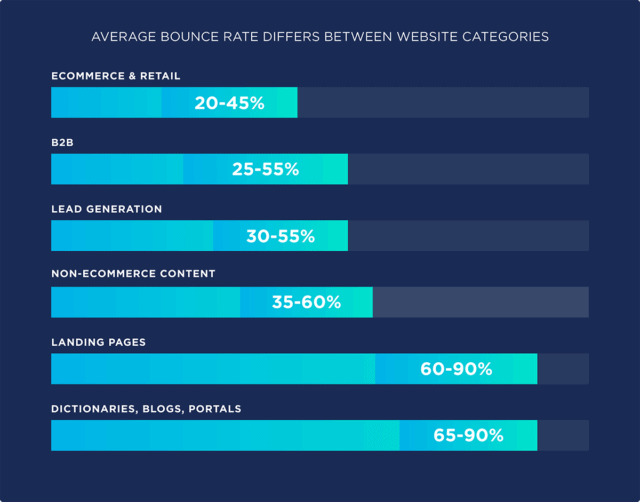
10. Post-Conversion Thank You Page: After visitors take action on your landing page (e.g., making a purchase), direct them to a thank-you page that confirms their action and provides additional information or offers.
8. Use Third-Party Shopify Discount Apps for BFCM:
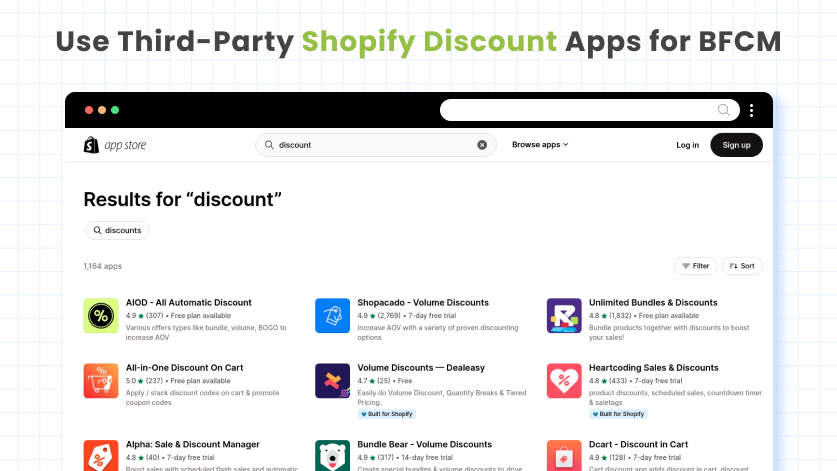
Third-party Shopify discount apps can play a crucial role in optimizing your Black Friday and Cyber Monday (BFCM) sales strategy. These apps provide the flexibility and functionality needed to create, manage, and track discounts effectively.
Here’s a step-by-step guide to look at:
1. Diverse Discount Types: Third-party discount apps offer various discount types, including percentage-based discounts, fixed-amount discounts, buy-one-get-one (BOGO) deals, and more. Choose an app that supports the types of discounts that align with your BFCM promotions.
You can also use the “AIOD – All Automatic Discount” Shopify app, which provides a wide range of automatic discounts, including quantity breaks, buy one, get one (BOGO), stacks, free gifts, and various other promotional offers.
This Shopify discount app has 8 different types of discounts in a single Shopify app with a user-friendly interface. It also works with Shopify POS.
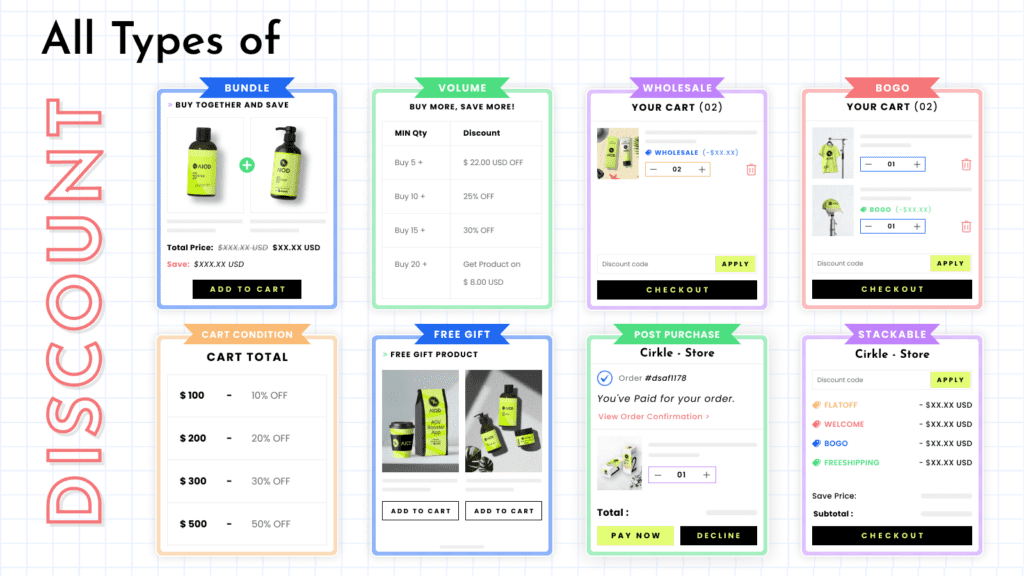
The “AIOD – All Automatic Discount” app has gained recommendations from several brands and platforms, including Shopify, Pagefly, UpPromote, Growave, Digismoothie, Avada, Appstle, and many other well-known brands in the industry.
2. Ease of Setup: Look for apps that are user-friendly and easy to set up. A straightforward interface will save you time and ensure that you can create and launch discounts quickly.
3. Scheduling and Timing: Utilize apps that allow you to schedule discounts in advance. Plan your BFCM promotions and set specific start and end dates for each discount to create a sense of urgency.
4. Tiered Pricing: This app enables tiered pricing, where discounts increase based on the quantity or value of items in a cart. This can incentivize customers to purchase more, increasing your average order value.
5. Limited-Time Offers: Create limited-time offers with countdown timers to build anticipation and drive urgency. This app can automatically remove discounts after the specified time, helping you maintain consistency.
6. Exclusivity: Consider apps that offer exclusive discounts to specific customer groups, such as VIP customers, subscribers, or first-time buyers. Exclusivity can boost customer loyalty and reward engagement.
7. Stacking and Compatibility: Verify whether the app allows discounts to stack. Stacking discounts can provide customers with added value and potentially increase sales. Ensure compatibility with other apps and features on your Shopify store.
8. Minimum and Maximum Purchase Requirements: Set minimum and maximum purchase requirements for discounts using these apps. For example, you can offer a discount for orders over a certain amount or limit the discount to specific product categories.
9. Bulk Discount Codes: This app enables the generation of bulk discount codes, which can be distributed via email marketing or social media. This allows for easy tracking of individual codes and personalized promotions.
10. Customer Segmentation: Segment your customer base using these apps and target discounts to specific segments. Personalize offers based on factors like past purchase behavior, demographics, or location.
11. Performance Analytics: This app provides robust analytics and reporting features. Monitor the performance of your discounts in real-time, track conversion rates, and assess the impact on revenue.
How to Create Creative BFCM Promotions:
When it comes to making a splash during Black Friday Cyber Monday (BFCM), creativity is your secret weapon. Unconventional BFCM discount strategies can set your Shopify store apart and draw customers in.
Here are seven innovative approaches, complete with detailed Shopify discount examples, to inspire your BFCM promotions:
1. The Mystery Deal Countdown:
Build anticipation with a mystery deal countdown where the Shopify discount gets better each day leading up to BFCM. Start with a modest BCFM discount and incrementally increase it as the event approaches.
For example, Day 1: 10% off; Day 2: 15% off; Day 3: 20% off; and so on, until BFCM, when the deal reaches its peak, say, 40% off. This strategy keeps customers engaged and curious, increasing the likelihood of them making purchases.
2. Buy More, Save More Treasure Hunt:
Create an interactive shopping experience with a “Treasure Hunt” discount. Customers unlock bigger BCFM discounts as they add more items to their cart.
For example, purchase 1 item for 10% off, buy 2 items for 20% off, get 3 items for 30% off, and so on. This incentivizes customers to explore your products and make larger purchases to maximize their savings.
3. Flash Sales Galore:
Organize a series of flash sales throughout the BFCM weekend, each lasting only a few hours. Promote these sales in advance to create a sense of urgency and exclusivity.
For example, on Black Friday, offer a “Power Hour Sale” from 10 AM to 11 AM with a whopping 50% off select items. Follow it up with a “Night Owl Sale” from 11 PM to 12 PM on Cyber Monday with a similar Shopify discount. These time-bound offers encourage customers to act quickly to secure the best deals.
4. Limited Edition Collectibles:
Create a buzz with limited-edition collectibles that are available only during the BFCM period. These unique items could be variants of existing products or exclusive items altogether.
For example, if you run a fashion brand, offer a limited-edition holiday-themed accessory that customers can only get during BFCM. This sense of exclusivity encourages quick purchases.
5. Referral Reward:
Empower your existing customers to become brand advocates. Offer Shopify discounts that increase based on the number of referrals they bring in.
For example, for every new customer a referral brings in, the original customer receives a Shopify discount. If they refer 3 friends, they get 30% off, and if they refer 5, they unlock a massive 50% discount. This turns your customers into active promoters and expands your customer base.
6. Shop to Win Big:
Turn shopping into a potential win-win scenario with a “Shop to Win” promotion. Each purchase grants customers a chance to win a grand prize or various smaller rewards.
For example, every customer who makes a purchase during BFCM is entered into a raffle. Prizes could include a luxury item, a shopping spree in your store, or even a free vacation. The allure of winning enhances the shopping experience.
Conclusion:
In conclusion, your success during the Black Friday and Cyber Monday (BFCM) shopping frenzy on Shopify hinges on your ability to strategize, prepare, and execute creative discount campaigns.
BFCM represents a golden opportunity to boost your sales, attract new customers, and retain loyal ones. It’s a pivotal moment that can define your annual revenue targets and set your business in an upward direction.
As we’ve explored in this guide, the path to BFCM success involves reviewing past performance, setting clear and measurable goals, optimizing your website, crafting a well-structured promotional calendar, leveraging email marketing campaigns, harnessing the power of social media, and creating engaging landing pages.
Additionally, the use of third-party Shopify discount apps can elevate your efforts and provide the flexibility needed to stand out in the crowded marketplace.
But remember, creativity is your secret weapon. Innovative approaches like Mystery Deal Countdowns, Buy More, Save More, Treasure Hunts, and Limited Edition Collectibles can set your Shopify store apart and generate excitement among customers.
Flash sales, referral rewards, and “Shop to Win” promotions add an element of fun and exclusivity to the shopping experience.
Now, what unique strategies will you use to captivate and engage your customers during the BFCM week? Share your thoughts in the comments!
